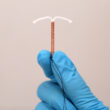When Chloe Cole was 12, she began to question whether or not she was a girl. By her thirteenth birthday, she was put on “puberty blockers“—the catchall name for the drugs that suppress the hormones that regulate the reproductive system in adolescent girls and boys. Soon after, Chloe began taking testosterone, also known as T, to masculinize her features. Just two years later, at the age of 15, she underwent a double mastectomy to amputate both of her (healthy) breasts; a procedure typically reserved for breast cancer patients. This irreversible surgery–usually preceded by breast binding in the cascade of transgender interventions–is euphemistically called “top surgery.”
Chloe recently described her story in great detail in an interview with psychologist Dr. Jordan Peterson. She explained how she had no idea how chest binding would affect her developing breasts, nor, as a 15-year-old, had she considered the loss of her future ability to breastfeed. “I also wasn’t really thinking at all about being a parent at all because I was… I was a kid,” she said.
Cole was offered a false solution to a struggle many teen girls experience
Taken out of the context of gender transition, Chloe’s story sounds remarkably similar to the experience of many other teenage girls. As a budding adolescent, she was uncomfortable with her body, questioned her identity and place in the world, and wasn’t yet considering her future as a mother. But instead of being affirmed in her feminine dignity, and allowed to grow up into the woman she was always meant to be, she was served the twofold lie that a) becoming a biological male was possible via hormones and surgical procedures, and that b) doing so would be the answer to all her problems.
As a vocal “detransitioner,” Chloe now deeply regrets masculinizing her features, and mourns the loss of her breasts. But the road to her physical mutilation didn’t start with invasive surgery. Instead, it all began with a deceptively simple medication: the puberty blocker. Transgender “experts” tout puberty blockers as a way to “pause puberty” and allow a child to “explore their gender identity” before the masculinizing or feminizing changes of natural puberty can take place. These same activists claim that puberty blockers are completely reversible and entail no permanent changes or side effects. If a child decides they don’t want to transition anymore, they can simply discontinue the drugs, and puberty will proceed as usual. No harm, no foul. Or so they claim.
No, you can’t just ‘pause’ puberty
This isn’t exactly true. An astonishing 98% of teens who begin puberty blockers continue on to receive hormone replacement therapy (HRT), as puberty blockers are often the first step in the gender transition process [1]. A new report from the United Kingdom explored this idea, noting that “there is no evidence that puberty blockers buy time to think, and some concern that they may change the trajectory of psychosexual and gender identity development” (emphasis mine).
In other words—halting typical male or female puberty changes the way a budding young man or woman sees him or herself. For anyone whose right to undergo puberty has not been interfered with, this reality is obvious. Puberty is a time of intense physical change for both males and females, but it also creates rapid psychological changes [2]. Removing puberty for an adolescent means that he or she does not receive the typical developmental benefits of this time [3].
The National Health Service (NHS) in the UK fortunately realized this, and recently chose to stop offering blockers to teens due to the unknown psychological effects of halting puberty. Other countries, including ones in Scandinavia (such as Denmark, which was once at the forefront of the transgender movement), have likewise slammed the breaks on the practice of offering puberty blockers to adolescents. However, despite many European countries now charting a much more conservative course for treating childhood and adolescent gender dysphoria, the United States has continued to plough ahead on increasingly radical transgender procedures.
A dangerous consensus
What do the American Academy of Pediatrics (AAP), the American Psychology Association (APA) and the World Professional Association for Transgender Health (WPATH) all have in common [4]? They are all in lockstep when it comes to promoting the ideological “affirmation” of children in their “right”’ to transition to the opposite sex—a process known as “gender-affirming care.” In Lost in Trans Nation, a child psychiatrist’s look at the current state of gender transitions for minors, author Dr. Miriam Grossman likens this alliance to dictator Fidel Castro, who completely banned all opposition to his reign in Cuba. “The medical community has adopted Fidel’s methods,” she writes. “Policymaking is dictated by a small number of ideological bullies who silence dissenting voices” (Grossman 52).
The very voices we are meant to trust (aka “the experts”), have led us astray. WPATH, which largely acts as an activism group rather than a professional association, recently had internal documents leaked which called into question a number of their standards of care. In the files, doctors and other WPATH members note that the children they’re counseling into transition “haven’t even had biology in high school yet” and do not have the “developmental range” to understand the medical interventions they’re undergoing. They also frankly discuss how many of the children they work with have other severe mental health issues, but state mental illness “should not block a person’s ability to start hormones.”
The other fact the experts like to ignore? These treatments, including puberty blockers, have some pretty concerning side effects.
Permanent effects from a supposedly temporary drug
In 2022, the Food and Drug Administration (FDA) issued a “black box warning” for puberty blocker medications (the highest level of warning issued by the agency for a drug). This was largely due to six cases in which young girls taking blockers experienced severe skull pressure from brain swelling, which can even cause permanent loss of vision. But their experiences didn’t even make national news, even as prescriptions of puberty blockers continue to rise.
Not every child who takes puberty blockers will experience such terrifying side effects. However, these drugs not only block the unwanted, physically obvious effects of puberty for gender dysphoric children (such as secondary sex characteristic development), they also block some of the most crucial developmental effects. Puberty is a time of rapid bone growth, when skeletal mass doubles [5]. By blocking puberty, adolescents miss out on this important physical development, leading to significant decreases in bone mass [6][7]. This drastically increases risk for osteoporosis in the future [8].
Atrophied testes and geriatric bones: the side effects of puberty blockers
In Lost in Trans Nation, Grossman describes multiple teenagers who experienced devastating bone mass loss, with one teen having bone density in the 1st percentile (Grossman, 67). These teens with “geriatric skeletons,” as she put it, are permanently damaged from their puberty blockers. One 15-year-old female was even diagnosed with osteoporosis (which is most common in adult females over the age of 50) after she experienced ongoing pain and spinal fractures (Grossman 66).
A recent study from the Mayo Clinic further shows the irreversibility of puberty blockers [9]. This study found that puberty blockers can cause mild to severe atrophy of male sex glands, with one case of a 12-year-old boy having over half of his sex glands become “fully atrophied” and calcium clusters found in his testes. Another boy, age 14, lost over 90% of his sperm-producing cells after using blockers for four years. The bodies of these children were permanently altered by these drugs. So much for simply putting a “pause” on puberty.
After puberty blockers, what’s next?
Furthermore, the pretense that puberty blockers are used and later discontinued by gender dysphoric children once they have time to “think puberty through” is just that–a pretense. The data shows that most often, puberty blockers are one of the first steps in a long line of increasingly invasive, dangerous, and permanent medical interventions [1].
The vast majority of youths who begin puberty blockers go on to receive cross-sex hormones, receiving either estrogen or testosterone in the form of regular injections. Men on cross-sex hormones face a long line of side effects, including 16x increased risk for blood clots, 2x higher risk of stroke [10]. They’re also more likely to have a heart attack and are forty-six times more likely to get breast cancer [10][11]. Women receiving testosterone also face numerous negative side effects, though they do have a lower risk of breast cancer [11]. Taking high doses of testosterone for even a short period of time can have strong effects on a woman, including hair loss due to male-pattern baldness. Even when women stop using T, their hair loss and vocal changes are irreversible. Additionally, women on T are at a much greater risk for high cholesterol, high blood pressure, pelvic pain, heart attack, and even uterine cancer [12][13][14][15].
And what if the young man or woman being put on puberty blockers and cross-sex hormones wants to start a family some day? If he or she began puberty blockers at the onset of puberty and went on to receive HRT (again, as the vast majority of them do), no natural maturation of gametes (either sperm or eggs) could take place. This makes reproduction largely impossible for these patients [16].
Where does it end? Ultimately, with surgery
Continuing down the conveyor belt of “trans-affirming care,” we finally come to surgery. These range from double mastectomies to facial feminization, but the surgeries with the most appalling outcomes are the creation of “new” genitals–so-called “bottom surgeries.” These procedures, also known as vaginoplasties and phalloplasties, involve either inverting a man’s penis to create a “vagina” or using a woman’s forearm skin to create a “penis.” You can read a more detailed account of what these surgeries entail here and here, but know that these procedures are highly experimental, and often end in the patient needing multiple future corrective surgeries. Trans patients have reported requiring urinary catheters for months (Grossman 177), fighting off infection after infection (178), having no sensation left in their genitals (178), and difficulty or inability to achieve orgasm.
As Chloe Cole’s story demonstrates, there aren’t many years in between putting a “pause” on puberty with puberty blockers and getting major reconstructive surgery on the most intimate parts of one’s body. As gender dysphoric children and teens continue to walk the path of “gender-affirming care,” they encounter increasingly larger perils: and it starts with puberty blockers.
Is there a way out of this madness?
In the conclusion to Lost in Trans Nation, Grossman gives some key recommendations for parents seeking to either prevent their children from falling for gender ideology or assist their children who have already taken the first steps down this road.
She asserts:
“Tell your children, Biology matters. Sex is not ‘assigned’ at birth, it’s hardly a hit-or-miss process… Teach them that like the Earth, their bodies are delicate ecological systems to be honored and preserved. High-dose estrogen in a boy and testosterone in a girl clash with the instructions in each cell. It’s a war against themselves, and they’ll pay a price…These are the indisputable truths your children have a right to hear, and you an obligation to convey.” (Grossman 224-225)
She also gives other practical tips, such as limiting your children’s Internet access and being involved in their schooling. Grossman’s advice comes down to this: you, the parent, need to be the one to introduce the issue of gender to your child. Not his friends or school, and certainly not the Internet.
Resources for parents concerned about puberty blockers
On that note, I highly recommend Lost in Trans Nation for any parent grappling with whether to begin “socially transitioning” or starting their gender dysphoric child on puberty blockers. Irreversible Damage by Abigail Shrier is likewise indispensable for anyone parenting a daughter.
Puberty blockers are not the answer
As a culture, we must teach children from the earliest of ages that their bodies are good. Being created male is a beautiful thing, just like being created female is a beautiful thing. Fathers should teach their sons about manhood and stewarding their bodies, just like mothers should teach their daughters about womanhood and stewarding their bodies. For women, teaching our daughters fertility awareness and that their cycles are something to celebrate instead of fear is a good first step.
In her interview with Dr. Peterson, Chloe Cole explained that a core reason she wanted to be a boy was because her entire girlhood was spent listening to the women around her complain about being female. They complained about periods, childbirth, motherhood, and menopause. They spoke of the rhythms of female life with disdain, rather than cherishing the innate gifts we have as women. To this, Chloe said, “I wanted absolutely nothing to do with being a woman.”
Let’s paint a better picture of womanhood (and manhood). Our children desperately need it.












Puberty blockers block the production of testosteron and oestrogen by inhibiting the release of LHRH from the brain. Oral combined anticontraceptives block the action of natural estrogen, in the same feedback mechanism but via a different entry point. Do you think you might say that eg. the mood effects of puberty blockers and the effects on bone strength are also applicable to the use of OCs?
I am a biological woman. Growing up, there were many times I wished I’d been born male. I never felt some kind of inner “soul” urge to change my sex. I never thought that there had been a mistake. Just that I’d drawn the short straw in the biology Lotto. For a girl it was one humiliation after another, one discomfort after another….messy, painful, public. Body never ever one’s own, but something to be gawked at by men, probed by doctors, compared to other women, invaded by some future being that would nearly tear me in half and, if I lived, demand every bit of my time and energy until I was too old for it to matter. The women in my family were unanimous and unambiguous in their declaration: being a woman sucked and if they could do it over again they would never have had children. They would have gone to college. Become lawyers or doctors and not 24/7 servants to husbands, kids, and aging in-laws. None of these women would have called themselves feminists. The label would have upset them greatly. Being a woman was simply a burden to be borne. I guess I can’t blame those individuals who wish to chart their own course. I do, however, think it’s better to save the irreversible decisions for adulthood. If only to take full responsibility for the outcome. Right now parents and doctors are between a rock and a hard place. Kids who are miserable and even suicidal, get what they insist they need for their well being, then change their minds in a few years and say, “why did you let me do it!” Sorry, but my sympathy is strained on all sides. Including toward those who are anti-trans because of their personal religious or political beliefs. They are just as bad as the sex change pushers. “My way is the right way and everyone else should do what I say .” Left or right. Agendas on every side. Half-truths at every turn.
Thank you for your comment, CL. One of the reasons we created our Mothers of (Pre)Teens program was to help moms instill within their girls the knowledge that being a woman is a gift, not a burden. Some of the most beautiful testimonials we’ve received from women who’ve participated in the program are the ones that note how hearing women speak so positively about femininity (and how learning to speak that way to their daughters) has bought them healing and helped them reframe their way of thinking about their own womanhood. That is why Natural Womanhood exists: so that all women can learn to claim their natural fertility (and their bodies) as beautiful, powerful, and healthy.